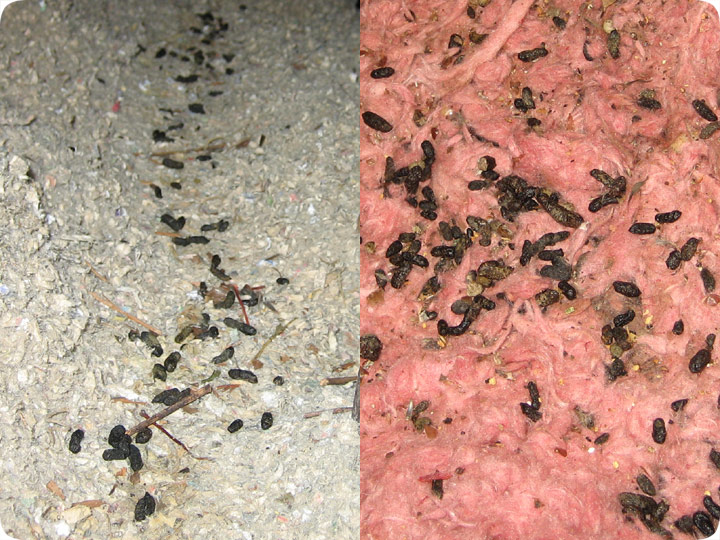-
info@aaanimalcontrol.com
Call us for help in your town
Humane Wildlife Education
Mouse & Rat Poop Droppings & Waste in Attic

The problems with mouse or rat droppings, or any animal droppings, for that matter in an attic is fourfold. First of all, the droppings tend to grow fungus or mold over time. This mold can often release airborne spores that the people inside the home can breathe, leading to lung infections such as histoplasmosis. The second problem with droppings in the attic is that the scent can actually attract new wildlife into your home. Whether it's the same species looking for a mate, or to beat the competition, or is simply drawn to a proven bat home, they will be drawn in. Some animal droppings and urine actually contain pheromones meant to attract more animals. Droppings can also attract predators.
The third problem is that the droppings are often laced with diseases that humans can catch. For more information, click animal poop diseases. The fourth problem is that the droppings may make your home smell bad. However, this is a lesser concern. You may want attic decontamination or even animal insulation replacement if you have animal waste in the attic, especially mouse or rat poop. I will now discuss some of the particulars of dealing with and removing rat feces in the attic.
Do it yourself: Visit my How To Get Rid of Rats page for tips and advice.
Get professional help: Visit my Nationwide Pro Directory of wildlife removal experts.
How to remove rat feces from attic -You need to be very careful when you go to remove rat shit from the attic. Not only do rats leave an abundance of waste, rat droppings are steeped with disease particles. It does not take much disturbance for those microbes to go airborne and then be inhaled by an unsuspecting human. Do not use your vacuum cleaner to take care of the mess. Vacuums stir up more dust than any other method of cleaning. For similar reasons, vigorous sweeping with a broom should be avoided. If you are determined to use one of these items, make sure you are wearing gloves, eye protection, and a respirator mask. Even with proper protective gear on, particles can stick to your hair and clothing. A shower after rodent cleanup is a must. The most acceptable method of cleaning up after rats and mice is with the scoop method. Any loose feces should be gently pushed into a container and then into a bag. Insulation should be completely removed if it is soiled. Leaving the dirty insulation in the attic will increase the risk of health issues and will also increase the risk of new rats being lured to the home.
For more wildlife stories, click my Wildlife Blog or click my below banner to hire a local trapper.





















